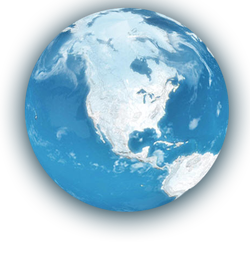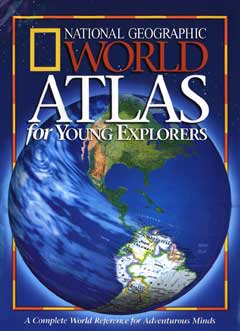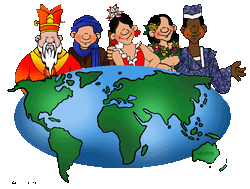Unit 4 Lesson 3: "Independence"
| unit_4_lesson3.ppt |
Freedom: is t right of people to make their own choices.
Independence: is the freedom of people to choose their own government.
Independence: is the freedom of people to choose their own government.
Unit 4 Lesson 2: "Early America"
| history_unit4_lesson2.ppt |
History: is the study of things that happened in the past. It tells about places and people and how they have changed over time.
Colony: is a place that is ruled by another country.
Settlers: are people who come from one place to another to settle and live there.
Colony: is a place that is ruled by another country.
Settlers: are people who come from one place to another to settle and live there.
Unit 4 Lesson 1: "People and Places Change"
Past: the time before now, things that happened long ago. "I went to Sharm el Sheikh last summer"
Present: the time right now, what is happening now! "I am reading a book now"
Future: is the time yet to come, what will happen later. "I want to be a doctor when I grow up"
Present: the time right now, what is happening now! "I am reading a book now"
Future: is the time yet to come, what will happen later. "I want to be a doctor when I grow up"
| people_and_places_changes.ppt |
Lesson 2 "People Settle", Unit 3 People we Know
Rural: rural areas are usually in the country, far away from a city. People's homes are far apart.
Urban: a city is an urban area, it has businesses, homes, and people.
Suburb: is a smaller community near a city. it has quieter neighborhoods, less traffic, and bigger yards (gardens).
Urban: a city is an urban area, it has businesses, homes, and people.
Suburb: is a smaller community near a city. it has quieter neighborhoods, less traffic, and bigger yards (gardens).
Lesson 1 "Land and Water Resources", Unit 3 People we Know
Natural Resource: is something found in nature that people can use.
Fuel: is a resource that can be burned for heat or energy.
Conservation: is the saving of resources to make them last longer. Recycling is another way to save resources.
Fuel: is a resource that can be burned for heat or energy.
Conservation: is the saving of resources to make them last longer. Recycling is another way to save resources.
| natural_resources.ppt |
Lesson 4 "World Regions", Unit 2 People we Know
Cardinal Directions: north, south, east and west.
Equator: is an imaginary line that divides Earth into northern and southern halves. Regions near the equator are very hot.
Hemisphere: is half of Earth. The Equator divides Earth into the Northern and Southern Hemispheres.
Pole: is a point on Earth farthest from the equator.
Equator: is an imaginary line that divides Earth into northern and southern halves. Regions near the equator are very hot.
Hemisphere: is half of Earth. The Equator divides Earth into the Northern and Southern Hemispheres.
Pole: is a point on Earth farthest from the equator.
Lesson 3 "Seasons and Climate",Unit 2 People we Know
Climate: is the kind of weather a place has over a long time.
Season: is a part of the year that has a certain kind of weather. The four seasons are winter, spring, summer, and fall.
Season: is a part of the year that has a certain kind of weather. The four seasons are winter, spring, summer, and fall.
Important !
There will be going a quiz next Monday 29 on Chapters 1,2 in For a Better World.
You can use the book to study along with the website, all the terms with pictures are here on the website :) Please do not memorize the Arab Countries or their currencies or their capitals. The quiz will not test their ability to memorize, however it will test their knowledge.
Good luck:)
You can use the book to study along with the website, all the terms with pictures are here on the website :) Please do not memorize the Arab Countries or their currencies or their capitals. The quiz will not test their ability to memorize, however it will test their knowledge.
Good luck:)
We finished unit one in People we Know :)
Unit 2, Lesson 2, "North America". New Terms:
Landform: is a kind of land with a special shape, for example, hills, mountains, plains...etc.
Other landforms:
Peninsula: a kind of land that has water around it on only three sides.
Island: is a landform with water all around it.
Gulf: is a large body of water that is surrounded by land. The Gulf of Mexico is a well known gulf, it is located between the United States and Mexico.
Bay: is a smaller body of water that is surrounded by land.
Other landforms:
Peninsula: a kind of land that has water around it on only three sides.
Island: is a landform with water all around it.
Gulf: is a large body of water that is surrounded by land. The Gulf of Mexico is a well known gulf, it is located between the United States and Mexico.
Bay: is a smaller body of water that is surrounded by land.
Unit 2, Lesson 1, "Maps and Locations". New Terms:
There are many kinds of maps. Maps show Locations.
Location: the place where something is.
There are two types of locations:
Relative Location: tells what a place is near.
Absolute Location: is the exact location.
Map Grid: is a set of lines that divide a map into columns and rows of squares.
Location: the place where something is.
There are two types of locations:
Relative Location: tells what a place is near.
Absolute Location: is the exact location.
Map Grid: is a set of lines that divide a map into columns and rows of squares.
New terms: Chapter 3 "The Surface of the Earth", in the book For a Better World
Lesson 1:
Mountain: is a very high land. The highest point of a mountain is called "summit".
Hill: is an area of high land, but not as high as a mountain.
Plain: is a flat land. Many farms are found on plains.
Valley: is a low land found between two mountains or hills. Rainwater runs in valleys.
Lake: is a large area of water with land all around it.
River: is a long path of running water. A river ends up in a lake or a sea.
Ocean: is a very large area of salty water. Remember! There are four ocean: " Pacific, Atlantic, Indian, and Arctic oceans".
Sea: is part of the ocean. it is the water body that is close to land "beach".
Mountain: is a very high land. The highest point of a mountain is called "summit".
Hill: is an area of high land, but not as high as a mountain.
Plain: is a flat land. Many farms are found on plains.
Valley: is a low land found between two mountains or hills. Rainwater runs in valleys.
Lake: is a large area of water with land all around it.
River: is a long path of running water. A river ends up in a lake or a sea.
Ocean: is a very large area of salty water. Remember! There are four ocean: " Pacific, Atlantic, Indian, and Arctic oceans".
Sea: is part of the ocean. it is the water body that is close to land "beach".
Lesson 3: " Our Leaders" , in the book People we Know.
Election:citizens have the right to choose their government leaders at an event called election. People choose the leaders they think will do the best job. Like when we made an election in the class and chose Maya to be the Mayor of the week.
Leader: is a person who helps others get a job done. when people work in a group, a good leader helps them get a job done. Like when we choose everyday "the leader of the day", to help Miss. Amy and I get a job done.
Mayor: a leader who leads a city or a town.
Governor: a leader of a state.
President: is the leader of our country.
Leader: is a person who helps others get a job done. when people work in a group, a good leader helps them get a job done. Like when we choose everyday "the leader of the day", to help Miss. Amy and I get a job done.
Mayor: a leader who leads a city or a town.
Governor: a leader of a state.
President: is the leader of our country.
New terms : chapter 2 "For a Better World"
- Capital city: every country has many cities and has one capital city. The red star in the map below stands for "capital city".
- Dialects: different way of speaking the same language.
- We covered the Arab countries in Africa and Asia. There are 22 Arab countries, 12 in Asia and 10 in Africa.
- Flag: every country has its own flag, which is a symbol of the country, they have different shaps and colors.
- Currency: every country has its own money, the currency in Egypt is called "Pound", in Saudi Arabia is called "Riyal".
- Passport: you need a passport to travel to other countries.
- Exchange: you need to exchange your currency with the currency used in the country you are traveling to.
- Dialects: different way of speaking the same language.
- We covered the Arab countries in Africa and Asia. There are 22 Arab countries, 12 in Asia and 10 in Africa.
- Flag: every country has its own flag, which is a symbol of the country, they have different shaps and colors.
- Currency: every country has its own money, the currency in Egypt is called "Pound", in Saudi Arabia is called "Riyal".
- Passport: you need a passport to travel to other countries.
- Exchange: you need to exchange your currency with the currency used in the country you are traveling to.
Announcement
There will be a Social Studies Quiz next Thursday, October, 21, 2010. The quiz will be on lesson 2 "Government for the People". The vocabulary words are posted on the website, and the copybooks will be sent home tomorrow.
-

Globe
We finished chapter 1 in For a Better World! :)
Here are the vocabulary words that we studied:
Globe: it is a model of earth.
Map: a drawing that shows places and countries.
Map Key: it tells you whats in the map.
North Pole: a point located at the north part of the earth.
South Pole: a point located at the very end "south" of the earth.
Atlas: a collection of maps that shows different places.
Border: a line that separates between countries.
We also took the cardinal directions: North, South, East, West.
There are 7 continents: Africa, Europe, Asia, North America, South America, Australia and Antarctica.
Here are the vocabulary words that we studied:
Globe: it is a model of earth.
Map: a drawing that shows places and countries.
Map Key: it tells you whats in the map.
North Pole: a point located at the north part of the earth.
South Pole: a point located at the very end "south" of the earth.
Atlas: a collection of maps that shows different places.
Border: a line that separates between countries.
We also took the cardinal directions: North, South, East, West.
There are 7 continents: Africa, Europe, Asia, North America, South America, Australia and Antarctica.
This is a link to a website that has some online games that will help your child learn the names and locations of the seven continents!
http://www.playkidsgames.com/games/findContinent/default.htm#
http://www.playkidsgames.com/games/findContinent/default.htm#
New Terms: Lesson 2 "Government for the People"
Government: a group of citizens that runs the community. They make laws to keep all citizens safe.
Court: it is part of the government. When people do not agree they go to the court.
Judge: a person who is in charge of the court.
Government service: something that the government provides for its citizens. for example: roads, schools, hospitals and parks.
Tax: money people pay for the government and used for the government services.
Court: it is part of the government. When people do not agree they go to the court.
Judge: a person who is in charge of the court.
Government service: something that the government provides for its citizens. for example: roads, schools, hospitals and parks.
Tax: money people pay for the government and used for the government services.
New Terms: Lesson 1
Community = a place where people work, live and play together. Your family and school are part of a community
Citizen - a person who belongs to a community
Right = any citizen has rights. A right is a kind of freedom. We can live and work where we want and we can share our ideas freely.
Responsibility = a responsibility is something you should take care of or do. Every person has a role or part in a community. A student is responsible for learning and studying.
Law= a law is a rule that citizens must follow. Rules and laws help us stay safe and protect our rights.
Consequence: a consequence is something that happens because of what a person does or does not do. Consequences help people follow rules and laws.
"Citizens in a community have rights and responsibilities. They must follow rules and laws to be safe and get a long."
Lesson 1 Summary"
Citizens have rights. They also have different roles. Each role has different responsibilities. Citizens must follow rules and laws to keep people safe, protect their rights, and promote fairness. There are consequences for not following rules and laws.
Citizen - a person who belongs to a community
Right = any citizen has rights. A right is a kind of freedom. We can live and work where we want and we can share our ideas freely.
Responsibility = a responsibility is something you should take care of or do. Every person has a role or part in a community. A student is responsible for learning and studying.
Law= a law is a rule that citizens must follow. Rules and laws help us stay safe and protect our rights.
Consequence: a consequence is something that happens because of what a person does or does not do. Consequences help people follow rules and laws.
"Citizens in a community have rights and responsibilities. They must follow rules and laws to be safe and get a long."
Lesson 1 Summary"
Citizens have rights. They also have different roles. Each role has different responsibilities. Citizens must follow rules and laws to keep people safe, protect their rights, and promote fairness. There are consequences for not following rules and laws.
Beginning of class
Dear parents,
I hope that you all read my letter concerning the class. We will start Unit 1, lesson 1 "Governing the People" and use the text book on Monday September 27, 2010.
Thank you,
Ms Maha
I hope that you all read my letter concerning the class. We will start Unit 1, lesson 1 "Governing the People" and use the text book on Monday September 27, 2010.
Thank you,
Ms Maha
** A letter was sent home on Wednesday September 22, 2010 explaining the class.
** The first lesson from the materials will start next week
** The first lesson from the materials will start next week


























